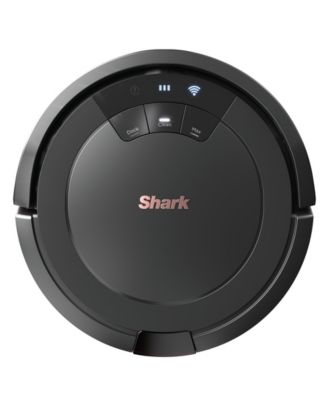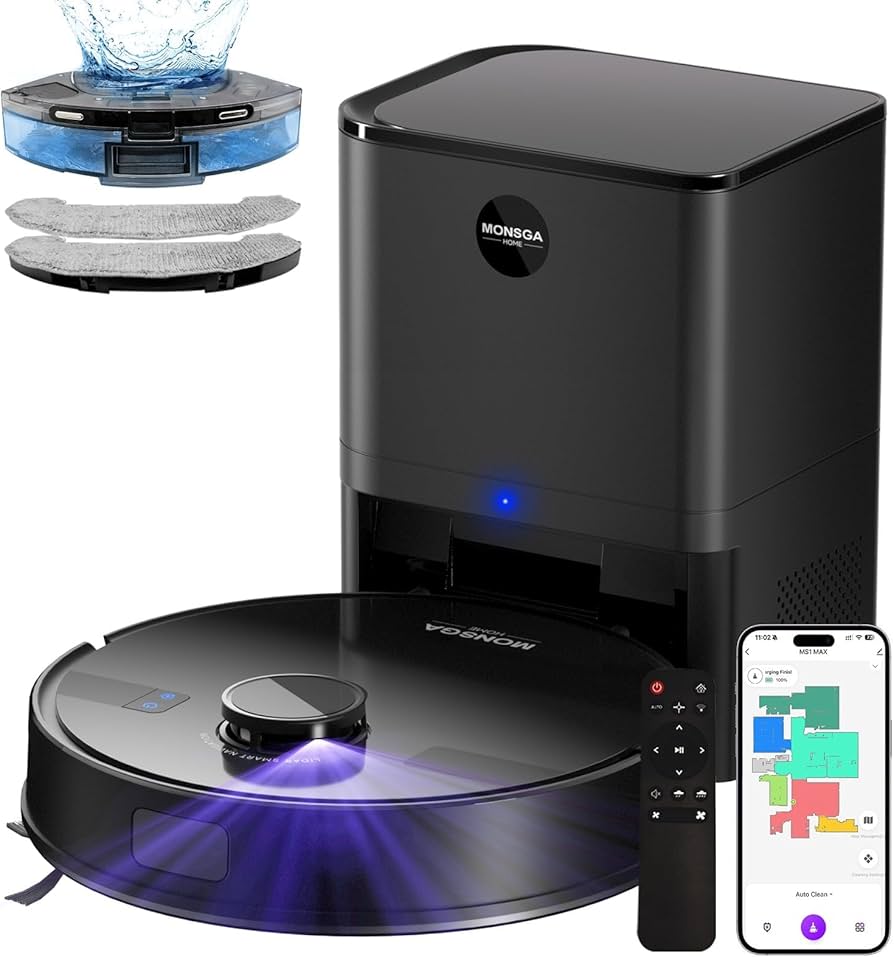Are you tired of dragging your vacuum around, especially when it comes to those stubborn carpets? Imagine a robot vacuum that listens to your voice and takes care of the mess without you lifting a finger.
But here’s the big question: can a voice-controlled robot vacuum really handle carpets as well as hard floors? If you’ve ever wondered whether these smart gadgets are up to the task, keep reading. You might be surprised by what they can do—and what they can’t.
Let’s dive in and find out if your dream of effortless carpet cleaning can become a reality.
Voice-controlled Robot Vacuums
Voice-controlled robot vacuums are smart devices that clean your home using simple voice commands. They connect to your home Wi-Fi and listen for instructions through voice assistants. These vacuums offer a hands-free way to keep floors clean, even on carpets.
Many people enjoy how easy it is to start or stop cleaning by just talking. Voice control adds convenience and saves time. It also makes robot vacuums more user-friendly, especially for those who struggle with small buttons or apps.
How Voice Control Works
Voice control uses microphones to hear commands clearly. The robot vacuum connects with smart speakers or phones. When you speak, your command goes to a voice assistant. The assistant then tells the vacuum what to do. Commands can include starting, stopping, or changing cleaning modes.
Popular Voice Assistants
Most voice-controlled vacuums work with popular assistants like Alexa, Google Assistant, and Siri. Alexa is common in many homes and works with many brands. Google Assistant understands many languages and accents. Siri works well with Apple devices. These assistants make it easy to control your vacuum using simple phrases.
Benefits Of Voice Control
Voice control lets you clean without touching the vacuum. It saves time and effort by using quick commands. You can clean hard-to-reach places without moving furniture. Voice commands also help people with limited mobility. The vacuum can start cleaning while you focus on other tasks.
Carpet Cleaning Challenges
Cleaning carpets presents unique challenges for robot vacuums. These devices must handle different carpet types and varied dirt. Some carpets need more power and special brushes. Dust and debris can hide deep in carpet fibers. Robot vacuums may struggle to clean thoroughly.
Types Of Carpets
Carpets come in many styles and materials. Low-pile carpets have short fibers and are easier to clean. High-pile carpets have long, thick fibers. These hold dirt and dust more tightly. Wool carpets need gentle cleaning to avoid damage. Synthetic carpets usually resist stains but trap debris. Each carpet type affects how well a robot vacuum works.
Common Carpet Dirt And Debris
Dirt on carpets varies from dust to large crumbs. Pet hair is often tangled in fibers. Small stones and sand can wear down carpet threads. Food crumbs attract insects and cause stains. Dust mites live deep inside carpets. These particles need strong suction and good brushes to remove.
Difficulties For Robot Vacuums
Robot vacuums face several problems with carpets. Thick fibers can block brushes and wheels. Suction power may not reach deep dirt. Some robots get stuck on high-pile carpets. Edge cleaning is often weak on rugs. Sensors can misread carpet edges or folds. Battery life may limit cleaning time on large carpets.
Robot Vacuum Features For Carpets
Robot vacuum cleaners designed for carpets have special features. These features help them clean deeply and avoid getting stuck. Understanding these can help you choose the right vacuum for your home.
Carpets need strong cleaning tools. Not all robot vacuums work well on thick or shaggy carpets. Some models adjust their settings to clean better on carpeted floors.
Suction Power
Suction power is the vacuum’s strength to pull dirt and dust. Higher suction works better on carpets. It reaches deep into fibers to remove hidden dirt. Robots with adjustable suction can change power based on floor type. This saves battery and cleans effectively.
Brush Types
Brushes pick up dirt and hair from carpets. Some vacuums have rubber brushes that untangle hair. Others use bristle brushes to scrub dirt loose. A combination of both works best on many carpets. Brushes should be easy to clean and replace.
Height Adjustment
Carpets vary in thickness. Height adjustment lets the vacuum raise or lower itself. This helps the vacuum move smoothly over different carpet types. It also prevents the vacuum from getting stuck or missing dirt. Many robot vacuums sense carpet height automatically.
Navigation And Sensors
Good navigation helps the vacuum cover all carpet areas. Sensors detect edges, obstacles, and carpet changes. Some vacuums map the room for better cleaning paths. Sensors prevent the vacuum from falling off stairs or bumping furniture. Smart sensors improve cleaning on carpets and hard floors.

Performance On Different Carpet Types
Voice-controlled robot vacuums face different challenges on various carpet types. Their cleaning power and movement depend on carpet thickness and fiber density. Understanding these differences helps in choosing the right robot vacuum for your home.
Low-pile Carpets
Low-pile carpets have short fibers and a flat surface. Robot vacuums easily move and clean these carpets. They pick up dust, crumbs, and pet hair effectively. Most voice-controlled models perform well on low-pile carpets without losing suction power.
Medium-pile Carpets
Medium-pile carpets have fibers that are longer and denser than low-pile. Robots may slow down a bit but still clean well. Suction might drop slightly due to thicker fibers. Some models adjust suction power automatically for better cleaning on medium piles.
High-pile And Shag Carpets
High-pile and shag carpets have long, thick fibers. These carpets are harder for robot vacuums to clean thoroughly. Robots can get stuck or have trouble moving on such surfaces. Suction power often decreases, making it tough to remove deep dirt and debris.
Voice Commands For Carpet Cleaning
Voice-controlled robot vacuums make carpet cleaning easier. You can use simple commands to start or stop cleaning. They respond quickly and work without much effort from you. These vacuums can adjust their settings to clean carpets well. Voice commands let you control cleaning modes and focus on specific carpet areas.
Customizing Cleaning Modes
Use voice commands to choose the best cleaning mode for your carpet. Some vacuums have modes like deep clean or gentle clean. You can say, “Start deep clean on carpet.” The vacuum changes settings for better dirt removal. This helps protect delicate carpet fibers while cleaning tough spots.
Spot Cleaning On Carpets
Voice control allows targeted cleaning on carpet stains or messes. Say, “Clean the carpet spot under the table.” The robot moves to that area and cleans thoroughly. Spot cleaning saves time and energy. It focuses power on small, dirty carpet sections only.
Scheduling Carpet-specific Cleaning
Set cleaning times for carpets using voice commands. Commands like, “Schedule carpet cleaning every Monday at 3 PM,” work well. The robot vacuum cleans carpets automatically at the set time. This keeps your carpets fresh without manual effort. Regular cleaning helps maintain carpet appearance and hygiene.

Limitations And Considerations
Voice-controlled robot vacuums offer convenience but face challenges on carpets. Understanding their limitations helps set the right expectations. Some carpets may be harder to clean effectively. Certain features can affect performance and user experience.
Battery Life On Carpets
Cleaning carpets uses more battery power than hard floors. The vacuum must work harder to move across thick fibers. This reduces the run time before needing a recharge. Expect shorter cleaning sessions on dense or high-pile carpets. Plan to charge the robot more often in carpeted areas.
Noise Levels
Robot vacuums tend to be louder on carpets. The motor works harder to pick up dirt. The brushes and wheels also create more noise. This can be distracting in quiet rooms or at night. Consider the noise factor if you have light sleepers at home.
Maintenance Needs
Carpets increase the wear on brushes and filters. Hair and carpet fibers can clog parts faster. Cleaning and replacing components often is necessary. Regular maintenance keeps the vacuum running smoothly. Check the brush roll and filter after every few uses on carpet.
Tips To Maximize Carpet Cleaning
Maximizing carpet cleaning with a voice-controlled robot vacuum needs some care. Small steps can help your robot work better and clean deeper. These tips make sure your carpet stays fresh and dust-free.
Preparing Carpets For Cleaning
Remove small objects and toys from the carpet. Loose cords and rugs can tangle the vacuum. Straighten carpet edges to avoid tripping the robot. Clear clutter helps the vacuum move freely and clean well.
Regular Maintenance
Empty the vacuum’s dustbin after each use. Clean the brushes and wheels often to stop hair build-up. Check the sensors for dirt to keep navigation smooth. Regular care keeps the vacuum running at its best.
Using Virtual Barriers
Use virtual barriers to block off delicate areas. Protect fragile items and thick rugs from the vacuum. This helps the robot focus on high-traffic carpet zones. Virtual walls guide the robot for efficient cleaning.

Top Voice-controlled Robot Vacuums For Carpets
Choosing the right voice-controlled robot vacuum for carpets can improve your cleaning routine. These vacuums offer hands-free control and adapt well to different carpet types. Some models have strong suction and smart sensors for deep cleaning.
Below, explore top options for various budgets and see what users say about them.
High-end Models
High-end robot vacuums provide powerful suction and advanced navigation. They clean thick carpets effectively and avoid obstacles smoothly. Many support voice commands through Alexa or Google Assistant. These models often include features like mopping and self-emptying dustbins.
Budget-friendly Options
Budget-friendly voice-controlled vacuums focus on basic cleaning and simple controls. They perform well on low to medium pile carpets. Many still offer voice integration, but with fewer advanced features. These models suit small homes or apartments with less carpet area.
User Reviews And Ratings
Users praise vacuums that clean carpets deeply and respond well to voice commands. Some report issues with thick rugs or complex carpet patterns. High ratings often highlight easy setup and quiet operation. Checking reviews helps pick the best vacuum for your carpet type.
Frequently Asked Questions
Can Voice-controlled Vacuums Clean Thick Carpets Effectively?
Yes, many voice-controlled robot vacuums can clean thick carpets. They use strong suction and adjustable settings to tackle different carpet types efficiently.
Do Robot Vacuums Recognize Carpeted Areas Via Voice Commands?
Voice commands typically start or stop cleaning but don’t specify carpet areas. Navigation sensors detect carpet zones automatically for optimized cleaning.
Are Voice-controlled Robot Vacuums Suitable For High-pile Carpets?
Some models handle high-pile carpets well if they have powerful suction and brush adjustments. Check product specs for carpet compatibility before purchasing.
How Does Voice Control Improve Vacuuming On Carpets?
Voice control offers hands-free operation, allowing easy start, stop, or mode changes. It enhances convenience without compromising carpet cleaning performance.
Conclusion
Voice-controlled robot vacuums can clean carpets well. They adjust settings to match carpet types. Some models work better on thick carpets than others. Regular use keeps carpets looking fresh and tidy. Voice commands make cleaning easier and hands-free. Choose a vacuum with strong suction for best results.
Remember, no vacuum is perfect for every carpet. Test your robot vacuum on your carpet before buying. It saves time and avoids disappointment. Overall, these vacuums offer a helpful, simple cleaning option.



